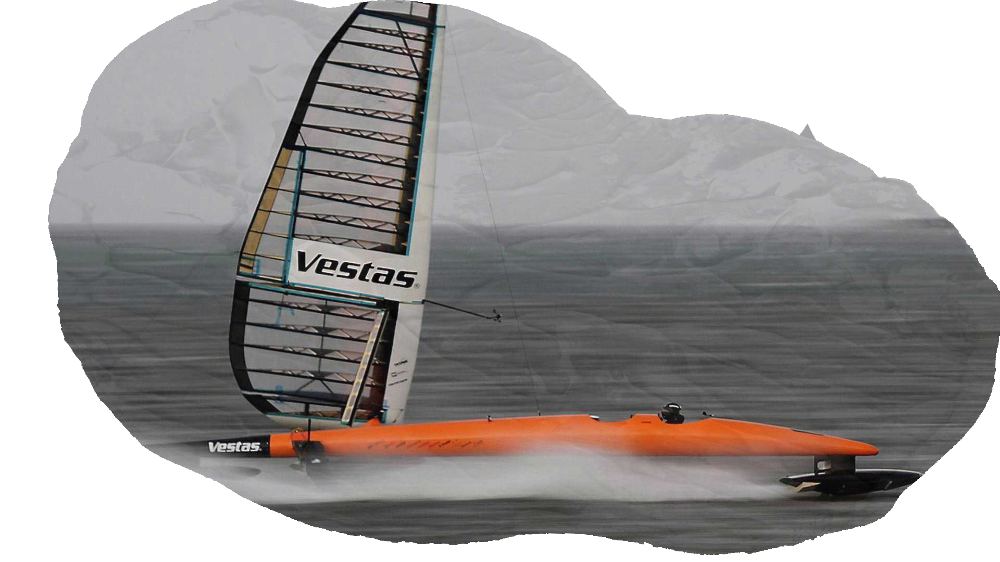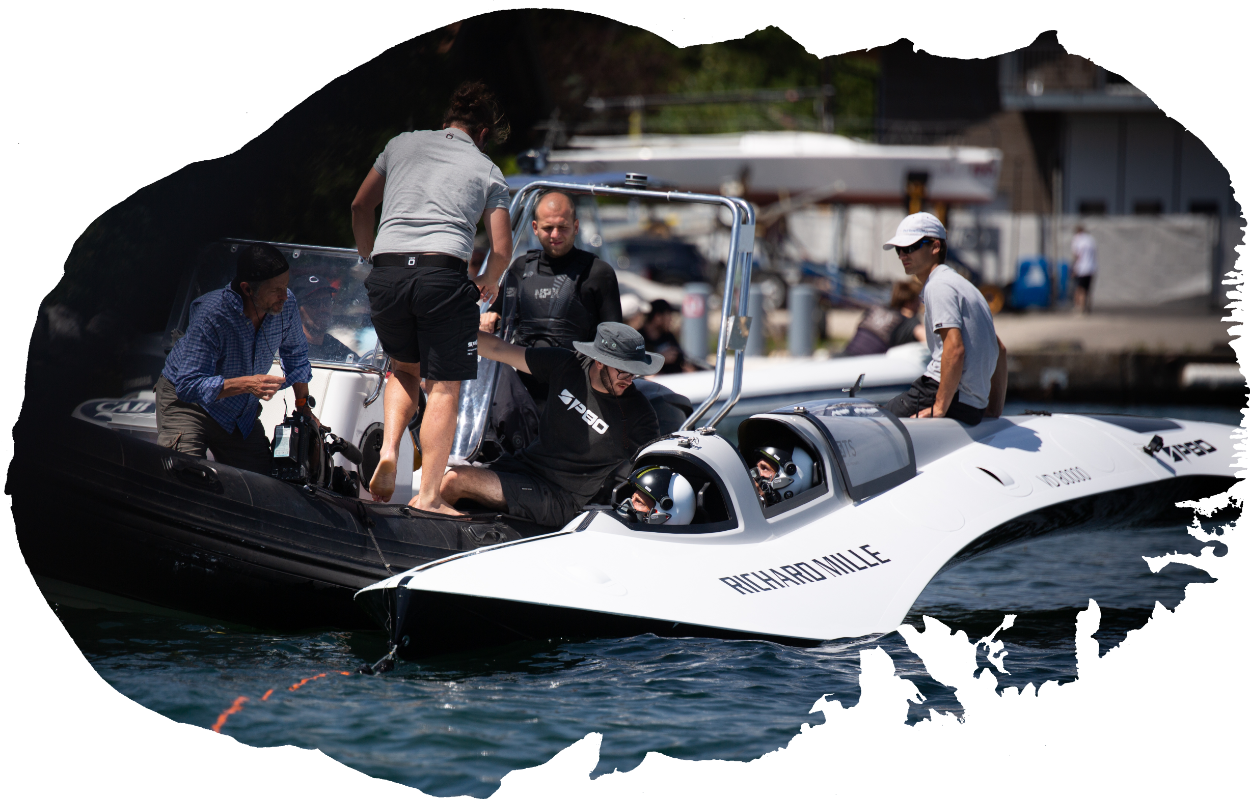
CURRENT RECORD: 65.45 KNOTS
Onboard Vestas Sailrocket II, Paul Larsen and his team broke the world record in 2012 with a speed of over 65 knots (121.21km/h).
OUR TARGET: 80 KNOTS
Inspired by the speed potential of kites and encouraged by our first results, our goal has been built on our history.

A RECORD CLOSE TO THE SHORE, within sight of the audience.
RECORD RULES
Defined by World Sailing Speed Record Council
Reach the highest average speed over 500m.
Take onboard at least one person.
Use only the wind as an energy source.
Reach the highest average speed over 500m.
Take onboard at least one person.
Use only the wind as an energy source.
OUR BOAT FOR THE RECORD






The cockpit
It holds the pilots and centralises all the commands for boat steering and kite control. When reaching 80 knots (150 km/h), the necessary safety measures become close to those of a fighter jet. With this in mind, we made a trade-off to guarantee the pilots’ safety and still retain good ergonomics and vision on the course.
The kite
The kite captures the power of the wind and, coupled with the main hydrofoil, transforms it into propulsive force for the boat: the kite is the boat’s motor. To ensure optimal performances, its size is adaptable according to wind conditions with a surface area spanning from 20m2 to 50m2.
The power module
It is the most important element on the boat. This mechanical system efficiently governs the transmission of forces between the kite, the hydrofoils and the boat while maintaining the boat’s stability at high speed.
The hulls
Always in contact with the water, their main functionality is to maintain stability under any conditions.The trimaran structure of the boat allows it to remain stable at low and high speeds. Stability is one of the key aspects of our concept to give the pilots the confidence needed to use all the power available in the boat.
Copyright 2025 | SP80 | All Rights Reserved

